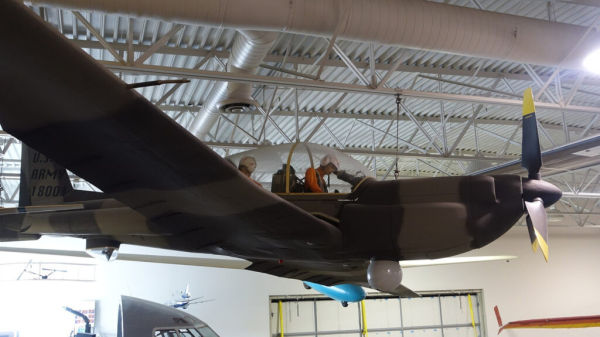NATS reports that a medium aircraft descending at about 1000 feet makes about 70 DbA, and that this is a crucial part of the aircraft’s operations that has been developed over time to be less intrusive. According to the provider, engines are about 90% quieter than they were in around the 1960s. Even so, they can still cause considerable disruption.
One of the quietest aircraft ever to fly was Lockheed’s YO-3A. It was designed for service during the Vietnam War as a stealth recon and surveillance aircraft, but not stealth in the sense we understand it today. At just over 29 feet long, it wasn’t the most physically imposing of aircraft, but that was precisely the point. It also had a 57 feet wingspan, which is considerable for its size. This was no heavily-armed titan, but a subtler model created to perform rather closer to the ground. In fact, though it operated at up to around 14,000 feet, It typically flew at only about one-seventh of that height. This is because its role was to get the best view of movements on the ground.
Stealth fighters and bombers employ sophisticated techniques to confuse or scatter incoming radio waves trying to detect them, appearing almost invisible to radar technology but not (of course) to the naked eye. The Lockheed YO-3A, meanwhile, was designed to utilize the cover of night and its own remarkably quiet operation to hide itself from enemy detection while on patrol. Other advanced planes would also serve during the Vietnam War, but none quite offered what this little wonder could.
The US secret weapon during the Vietnam War
In the Vietnam War, the jungle terrain made guerilla tactics tremendously effective, as it was very difficult to determine the positions of opposing troops (or deadly traps for that matter). Though tanks did play a role in the Vietnam War, what US forces needed was a means of detecting stealthy foes without making themselves vulnerable in the process. The YO-3A was created as an eye in the sky for that very reason, providing a suite of sophisticated sensors to allow it to determine enemy positions through techniques like infrared imaging and a periscope. The issue was, this was a propeller-driven aircraft, like the C-130 Hercules, and those certainly aren’t known for their subtlety.
The YO-3A needed to get close enough without drawing attention from targets. The Viet Cong strategy revolved around guerrilla tactics and expert use of terrain, all advantages that would be robbed if a reconnaissance aircraft revealed positioning. As such, the forces would surely shift focus to destroy any reconnaissance if it was detected. The Advanced Research Projects Agency set about devising a solution to this dilemma in 1967. Adapting the design of a Schweitzer SGS 2-32, the team began applying the concepts of a glider and the way it operates. The result was the prototype aircraft QT-2, an early version that would go on to be deemed the “Quiet Star.” It would boast a propeller that would turn more slowly than usual, coupled with a Continental IO-360D six-cylinder designed to significantly reduce operational noise.
The lifespan of the YO-3A
Militaries around the world experiment with different technologies in pursuit of a weapon, vehicle, or other piece of technology that may offer an advantage. Often, these innovations don’t get past the drawing board or prototype stage. This could easily have been the fate of the mechanically brilliant “Quiet Star,” but in this case, the aircraft was actually completed and officially made it to service.
A limited number of the aircraft were completed before going on to serve in Vietnam. As the Hiller Aviation Museum notes, “Remarkably, none were ever audibly detected by the enemy. There was only one singular incident recorded when an activation of landing lights momentarily betrayed its presence.” When US forces left Vietnam, some YO-3A aircraft continued to serve the country in a different capacity. It was well-equipped to serve in covert FBI operations, as effective at quietly tracking criminals as North Vietnamese forces.
Similarly, the YO-3A proved hugely valuable for the Louisiana Department of Wildlife and Fisheries, with the body able to monitor and apprehend those who would endanger the region’s animals. A mere 11 YO-3A planes were built, but their utility was shown for decades. In April 2015, one YO-3A that had been in NASA service became an exhibit at the Vietnam Helicopters Museum. It could be considered one of the most unique and experimental aircraft of its time and a testament to its designers willingness to dream. It was a service model and one that went on to serve roles that its creators could never have foreseen.





